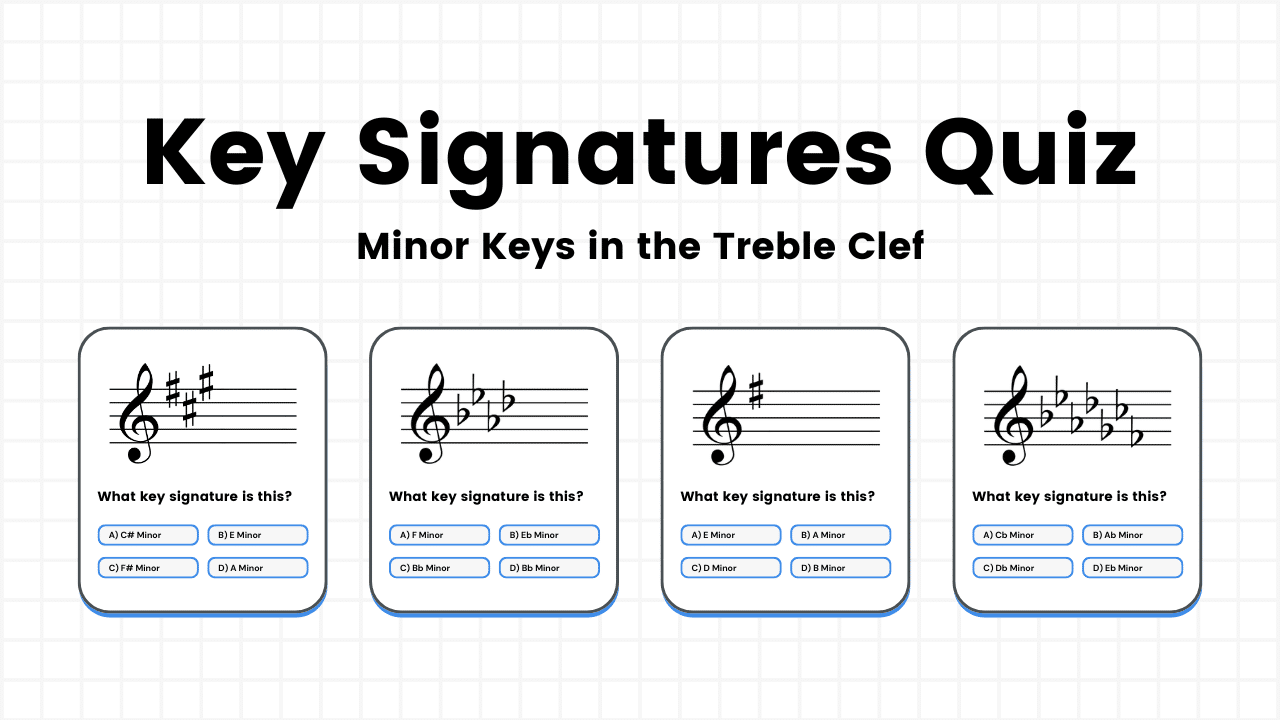If you’ve ever been in a choir or taken singing lessons, you’ve almost certainly come across solfege. It is the most common way children and students are taught how to sing certain scales and notes, and it is a really helpful skill to know, even for professionals. Even if you’ve never taken singing lessons, you’ve most likely heard someone use it or sing a melody with it.
In this post, we’ll answer the question: What is solfege? First, however, it could be helpful to brush up on what a scale is and how we play it.
Musical Scales
Solfege, which is also known as solfeggio or solmization, is based on the diatonic scale, which is a scale that has seven unique notes.
This is why there are seven letters of the musical alphabet used in Western music – A, B, C, D, E, F, G.
There are two kinds of diatonic scales, major and minor.
The major scale is the “happy” sounding scale, and the minor scale is “sad” sounding.
All you need to know for this post is that the main solfege notes come from the major scale.
What is Solfege?
Solfege is a system of notation in which every note of a scale is given a specific syllable that is always said for that note.
For example, a C major scale has a specific set of letters that are played in order – C, D, E, F, G, A, B, C.
In solfege the notes of a major scale are sung and written as:
- Do [pronounced as doh]
- Re [pronounced as ray]
- Mi [pronounced as me]
- Fa
- Sol [pronounced as so]
- La
- Ti [pronounced as tea]
- Do
And here is a C Major scale shown with the solfege notes:

Moveable Do and Fixed Do
The main difference between Solfege and regular letter notes is that Do is always the starting note of a major scale.
Say we had a C major scale and then moved up a note to play a D major scale – that scale would start and end on D (D, E, F♯, G, A, B, C♯, D).
However, both a C major scale and a D major scale would start and end on Do (Do, Re, Me, Fa, Sol, La, Ti, Do).
This notation is what is called Moveable Do, meaning the word ‘Do’ moves to wherever the starting note of the major scale is at the time.
However, there is also a notation technique called Fixed Do.
With Fixed Do solfege, Do is always a C, Re is always a D, Mi = E, Fa = F, Sol = G, La = A, and Ti = B.
However, this is very rare and mostly used in very old hymns and singing styles.
Do, a Deer
The most well-known use of solfege is this song from The Sound of Music (above).
It is also a very useful tool to learn from and, as we mentioned earlier, is used extensively in singing lessons.
This is be because the main character Maria explains the notes, how to pronounce them, and where they are in the major scale.
Accidentals (Sharps and Flats) in Solfege
So, we have the notes in solfege of any Major scale we can think of.
But what if you want to change some of the notes in the scale?
What if you want to make a note sharp (♯) and move it up one semitone, or make it flat (♭) and move it down one semitone, or take a note that’s already sharp or flat and make it natural (♮)?
These signs are called accidentals, and they are often used to make a scale or melody a bit more interesting or unique.
If you want to learn all about accidentals, check out our post here.
Solfege has a system for sharps and flats as well called Chromatic Solfege which is all the notes from the chromatic scale.
| Regular Solfege Note | Sharp (♯) Version | Flat (♭) Version |
| Do | Di [dee] | |
| Re | Ri [ree] | Ra [rah] |
| Mi | Me [may] | |
| Fa | Fi [fee] | |
| Sol | Si [see] | Se [say] |
| La | Li [lee] | Le [lay] |
| Ti | Te [tay] |


As you can see, not all notes have corresponding sharp and flat versions.
The only ones that have all three kinds are Re, Sol, and La.
This is because a major scale consists of semitones (half steps) and tones (whole steps).
The difference between Mi and Fa, and Ti and Do, is a single semitone, meaning there’s no way for an additional note to be placed in between them.
That’s why Mi and Ti don’t have a sharp version (because the note one semitone above them is already another note) and why Do and Fa don’t have a flat version.
As an example, if you took a major scale and lowered the 3rd and 7th you get a dorian scale, which, in the key of D that would look be D – E – F – G – A – B – C – D.
We would write that in solfege as:

Also, sometimes you might come across a piece of music that simply uses the solfege note and adds a sharp or flat sign to it.
For instance, they would say Do♯ [pronounced as doh sharp] instead of Di, or La♭(la flat) instead of Le.
But this is very rare, and much less common than the Di, Ri, etc. notation style mentioned above.
Minor Scales and Solfege
You might be wondering, all of this talk of Solfege has been related only to the Major scale.
So, how do we notate a Minor scale in Solfege?
We can do it in one of two ways:
- Do-based minor solfege
- La-based minor solfege
Let’s take a look at the first way which is do-based minor.
Do-based minor solfege
Do-based minor is similar to what we’ve been learning so far, and just takes the flattened 3rd, 6th, and 7th notes (Me, Le, and Te instead of Mi, La, and Ti).
For example, here’s how you would sing a C natural minor scale in solfege:

This treats the scale as if it’s it’s own key with the keynote (C in C minor) being Do.
La-based minor
The other kind of Minor scale we can have in solfege is La-based Minor.
With this technique you don’t have to change any of the main solfege notes (no changing La to Le, or Ti to Te, etc.).
But to do so, we need to start the scale on La, instead of Do. So, a C Minor scale in La-based Minor would look like this:

This way is much less common than Do-based Minor instead keeping the scale in its relative minor (Eb major in this case) but starting on the 6th degree of the scale.
Again, it’s not used very often but it’s helpful for you to know about and be able to use, you probably won’t find it much in real life.
Melodies in Solfege
Just like regular letter notes aren’t just used in scales, we can use Solfege to sing melodies.
Here is an example melody with the solfege notes written in below it:

Again, the “Do a Deer” song from The Sound of Music is helpful here.
Starting at the 2:17 minute mark, Maria shows the children (and the audience) how to “mix up” the notes and make a melody.
Summing Up
So (or Sol), that’s all there is to Solfege!
It seems difficult to understand at first, with all of these different words, but it’s really just another way of notating and writing music.
It’s like learning a new language – you are still saying the “notes” A, B, and C, just using different words for them.



